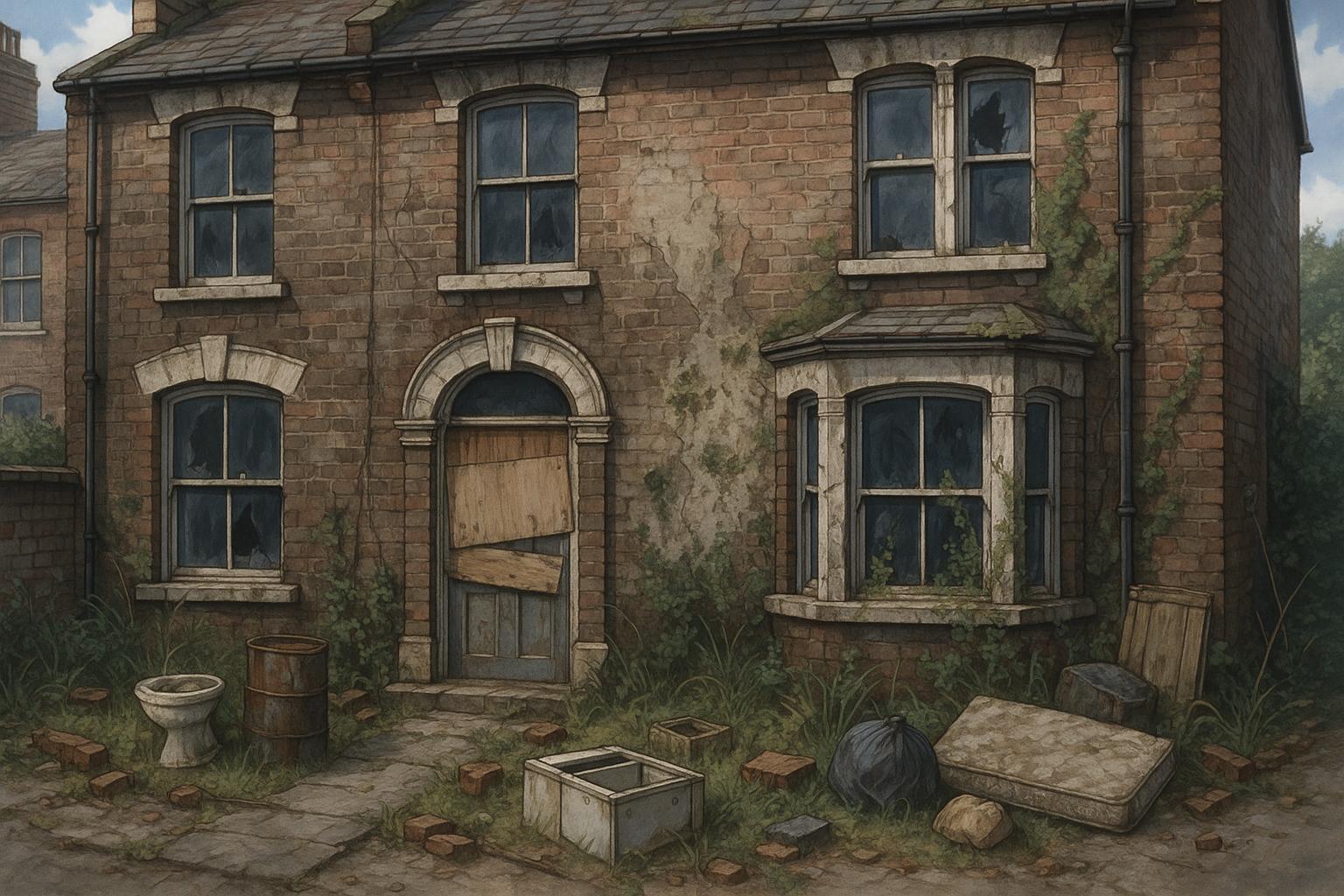A three-bedroom terrace property in London has recently entered the housing market at a price tag of just under £1 million. However, its unconventional state, marked by significant disrepair, has sparked curiosity and caution among prospective buyers. While the listing describes it as a "fantastic opportunity" for a family home, a boarded-up front door signals that this residence is in dire need of substantial renovations.
Inside the property, the reality is starkly evident. Photographs reveal a kitchen where the floorboards have been ripped up, ceilings are crumbling, and cupboards appear to cling precariously to dirty walls. The living room tells a disheartening tale of neglect, with degraded wallpaper marred by black mould. Additionally, the presence of discarded items—ranging from a black wheelie bin and an Eiffel Tower-shaped lampshade to badminton rackets—contributes to an impression of chaos.
As buyers ascend the uncarpeted, soiled staircase, they encounter bedrooms that embody the neglect permeating the house. One blue-walled bedroom, adorned with curtains hanging off their poles, features ripped floorboards and a makeshift window clasped shut with a piece of string. Another room, although possessing a charming fireplace, suffers from crumbling, mouldy wallpaper and a deteriorating ceiling.
Outside, what was once a spacious garden has devolved into a makeshift dump, littered with household refuse such as bins, bicycles, and chairs smothered by overgrown plants. This unfortunate state of affairs isn't simply an isolated example; it reflects broader trends in many parts of London, particularly in areas like Haringey.
Recent research highlights Haringey’s alarming status as the London borough with the highest number of mould and damp complaints, averaging 30.71 reports per 10,000 housing units. Data from Uswitch indicates that eight of the top ten local authorities for mould complaints are situated in London, with many residents facing challenges related to inadequate heating. With 60 per cent of respondents reporting mould growth in their homes, the health implications of living in such conditions are increasingly concerning. The links between mould and respiratory issues elevate the stakes for both tenants and landlords alike.
Local authorities have faced mounting pressure to improve living conditions. In response to these complaints, Haringey Council has initiated a comprehensive plan to tackle housing disrepair, with a focus on ensuring “liveable conditions” for tenants. This includes a proactive approach to inspections and improvements as councils respond to growing public concern, particularly within densely populated urban settings.
The experience of this three-bedroom property underlines a critical aspect of London’s housing market—its juxtaposition of opportunity and necessity for extensive renovation. Despite the allure of a perennially coveted location and the potential for expansion, as noted in the listing with mention of loft conversion possibilities pending planning approval, the reality is that many homes in this area reflect the broader struggles with damp and mould prevalent across London.
Ultimately, prospective buyers are left to contemplate whether the chance to own a home in North London is worth the extensive investment of both time and resources required to reclaim a residence from such debilitating conditions. While the listing boldly states that "an internal viewing is highly recommended," it is clear that this opportunity comes with significant caveats that may deter those unprepared for the challenges ahead.
Reference Map
- Paragraphs 1, 2, 3, 4, 5
- Paragraphs 5, 6
- Paragraph 6
- Paragraphs 6, 7
- Paragraph 7
- Paragraph 7
- Paragraphs 6, 7
Source: Noah Wire Services
